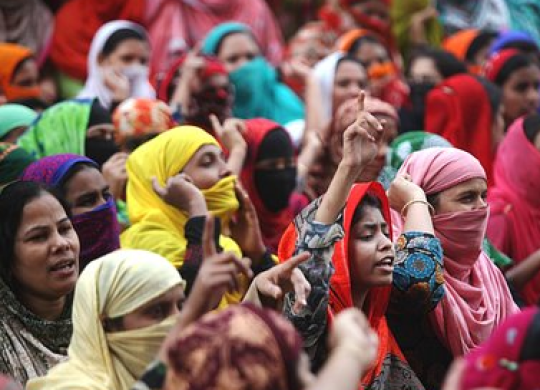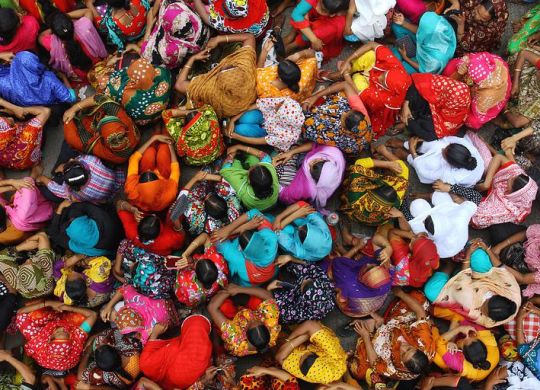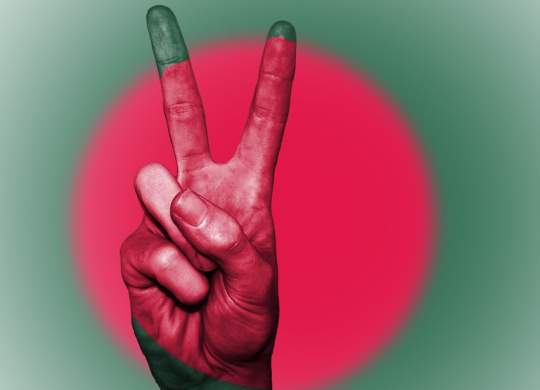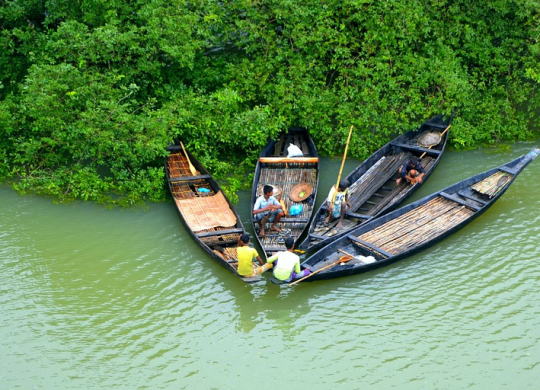Education in Bangladesh: what programs and forms of education exist in the country

Although many people retain the ability to survive without education, the knowledge and awareness gained through education allow the poor to improve their lives and lift themselves out of poverty. USAID and the World Bank are working to improve education in Bangladesh as a means to combat poverty.
- Bangladeshi children attend elementary schools for five years, ages 6 to 11.
- Some go on to secondary school for another 5 years.
- Very few will continue for another 2 years to get a certificate of higher education, and only a few will go to university.
- Elementary school in Bangladesh is free and compulsory.
- Bangladeshi children study Bangla, English literature, and, beginning in third grade, science.
- Secondary education is generally not free, although the government pays for secondary education for rural girls to encourage them to continue their education rather than marry young.
- Many children in rural Bangladesh do not attend secondary school.
Bangladesh is a country located in South Asia, almost entirely surrounded by India and bordered by Burma and the Indian Ocean. Historically, the country has suffered from hunger, food shortages, and armed conflicts, but more recently its economic growth has reduced poverty and valuable efforts have been made in education to increase enrollment.
Great efforts have been made to increase enrollment, which in 2012 was 77-80% for males and females aged 18-24.
Today, Bangladesh is one of the 10 most populous countries in the world. More than 161 million people make it the seventh most populous country in the world. The official language of the country is Bengali, which has its own alphabet and is the language of the centuries-old majority ethnic group that founded the country. The main religion is Islam, although there are also Hindus, Buddhists, and Christians.
Bangladesh's Education System
Despite the country's economic growth, poverty is still high among Bangladeshis. Kindergarten enrollment in this South Asian country is quite low at 26%. In addition, it should be noted that there are still some problems for many in secondary school, due to the fact that the number of students for this stage of education does not exceed 50%, indicating low continuity from one level of education to another.
Despite some disappointing numbers, the following is worth noting: Bangladesh, with a net enrollment of about 94 percent, is one of the few least developed countries that are close to achieving the UN Millennium Development Goal of 100 percent primary school enrollment. In the coming years, primary and secondary education will be further strengthened and expanded to include all segments of the population in the country.
General education in Bangladesh consists of primary, secondary, and higher education. The levels at this stage are named in roman numerals.
- Primary education consists of five years I to V, when children are 6 to 11 years old. Secondary education consists of seven years. The first three years, grades VI through VIII, constitute incomplete secondary education. Grades IX and X are known as high school.
- Finally, grades XI through XII are a high school. After passing this stage, young people can enroll in higher education and receive a university education, in private or public institutions.
There are both private and public schools, but there is still a tradition of all-male and all-female schools, especially at the high school level.
Secondary education lasts seven years and consists of two stages: dhakhil, which lasts from grades VI to X, and alim, which covers grades XI and XII. The difference is that there are different emphases in this scheme, the last two years. Higher education lasts 4 years and is divided into 2 cycles of 2 years each, which are called madrasah "fazil" and madrasah "kamil".
It is important to note: technical and vocational education is also available in the country. There are also schools with a religious bias of Islamic, Hindu, Buddhist, and Christian origin.
The state of education in Bangladesh
Progress has been made in improving education in Bangladesh over the past 10 years. According to USAID, nearly 98% of primary school-age children attend school.
In 2016, 50.9% of all enrolled students were girls, meaning full gender parity. Both of these statistics are major accomplishments, but more needs to be done to improve education in Bangladesh.
Reading literacy is the barometer used to measure the quality of the school system, and in Bangladesh, most students fail the basic fluency assessment. 44% of students finish first grade unable to read their first word, and 27% of third graders cannot read with comprehension.
Lack of literacy not only puts students at a severe disadvantage, it also hinders Bangladesh's economic growth prospects. Education plays an important role in sustainable, developing countries and economies, which is why USAID and the World Bank are investing in improving Bangladesh's education system.
Organization of Higher Education
Higher education institutions include public and private universities, institutes of technology, and colleges.
Universities are divided into four categories: general, special, open, and affiliated.
Chittagong, Dhaka, Rajshahi, and Shahjahal University of Science and Technology have affiliated medical colleges. All other colleges are affiliated with the National University of Bangladesh.
In affiliation systems, education is provided at the colleges, and curricula and examinations are controlled by the universities. The president of Bangladesh is the chancellor of the universities and is responsible for appointing vice-chancellors.
The executive body of each institution is the union, which approves accounts and reports. Faculty elects deans of faculties, who, along with faculty and college representatives, constitute the academic council.
State grants account for nearly 95 percent of university revenues. They are provided by the University Grants Commission. Tuition fees are the other main source of funding. The Bangladesh Association of Universities handles the universities' academic and administrative affairs.
Some of the larger and better-equipped colleges have been called university colleges. All medical colleges are under the administrative control of the Ministry of Health and Family Planning. They are outside the UGC system and have a Board of Institutes, chaired by the Minister of Education.
An independent university was recently founded, and the Institute of Postgraduate Medicine and Research at the University of Dhaka became the Bangabandhu Sheikh Mujib Medical University.
Nationality-Based Student Admission
Access to higher education is based on a high school diploma. Candidates can choose prescribed options (e.g., for engineering: mathematics, physics, chemistry, etc.) and for diploma courses. Applications should be sent in March.
International Student Admission
Students must have a visa and must be proficient in English. Language: The main languages of instruction are English and Bengali.
Estimated costs for one academic year: grants, scholarships, and assistantships for international students.
The Bachelor of Arts (BA) degree is awarded to students who have completed a three- or four-year program of study at the university. This allows students to focus on a specific field and acquire specialized skills.
Studying in Bangladesh offers many opportunities for students. The education system in the country is highly subsidized. Universities, colleges, and schools in Bangladesh offer a dynamic, creative, and challenging environment that gives students the opportunity to reach their potential.
Bangladesh is fully compliant with the UN Education for All goals and the Millennium Development Goals, as well as other international declarations concerning education.
Refugee Education
As of 2020 about a third of refugee children were able to access primary education, mostly through temporary centers run by international organizations. UNICEF operates about 1,600 learning centers across the country, enrolling about 145,000 children. For April 2020, UNICEF and the Bangladesh government planned to enroll 10,000 Rohingya children in schools where they would be taught the Myanmar school curriculum.
Grading system
In Bangladesh, grades equal to or greater than 33% (or one-third) are considered passing grades.
Since the educational system in Bangladesh is fully controlled by the state up to the upper secondary level (or 12th grade), the grading system up to that point is more or less the same. For each subject, grades are translated into "grades per grade (GP)," summed and divided by the total number of subjects, so they are called the "grade point average (GPA). The highest attainable GPA is 5.0. There also a "letter grade (LG)" which indicates the GPA range for the overall score or one GPA for an individual course.
Informal Education
There are a significant number of informal schools that primarily serve graduates of public and nonpublic elementary schools. However, very few schools provide education for the full five-year cycle of elementary education. As such, after completing two to three years of non-formal primary education in schools, students usually return to public/non-public elementary schools for upper grades.
There are non-governmental (NGO) schools and non-formal education centers (NEC) and many of them are publicly funded. The largest NFE program is the well-known BRAC program. However, not all graduates of NFE go on to secondary school.
Different NGOs have different policies regarding teacher recruitment. Some prepare a group of potential teachers on the basis of a rigorous test and recruit teachers from this group. Other NGOs recruit teachers rather informally from locally interested individuals.
Ongoing Problems
Current government projects to promote children's education in Bangladesh include compulsory primary education for all, free education for girls up to grade 10, scholarships for female students, a national integrated education system, and the food-for-education literacy movement. A significant portion of the nation's state budget is allocated to help implement these programs, as well as to promote education and make it more accessible. These efforts have borne fruit in recent years, and Bangladesh's education system is far ahead of what it was just a few years ago. Now even the national curriculum textbooks for grades 5 through 12 are distributed for free to all students and schools.
The education system in Bangladesh faces several challenges. In the past, education in Bangladesh was mostly a British-style upper-class affair, all subjects were taught in English, and very little was done by the common people. The Bangladesh Education Council has taken steps to make such practices a thing of the past and hopes that education will be a way to provide a better future for people living in poverty. Because Bangladesh is an overpopulated country, there is a great need to convert its people into the workforce, so proper education is necessary, and adequate government assistance in education in Bangladesh is crucial.
Universities and the current curriculum system in Bangladesh do not yet encourage critical industry-oriented thinking and mostly use rote learning, which encourages passivity within the corporate model, and the country has not yet implemented a mixed results-based education system that includes classroom and laboratory instruction with hands-on, industry-oriented learning for undergraduate and graduate engineering majors.
Recommended articles
4 min
Residence permit
4 min
Treatment
5 min
Education
All materials and articles are owned by VisitWorld.Today and are protected by international intellectual property regulations. When using materials, approval from VisitWorld.Today is required.

